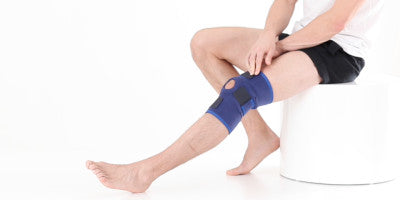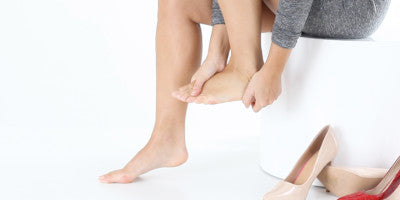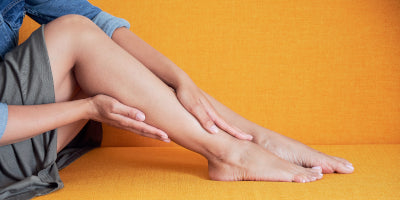Insoles Buying Guide
With there being so many insoles on the market, it can be daunting looking for an orthotic that’s right for you. They range from $1 to $500; they can be hard or soft, rigid or flexible, full length or short and they all say they are going to help. You may be at the start of your journey, or you may have already tried many insoles and still haven’t found one that has helped your pain and we understand how frustrating that can be. You may even be considering going down the route of a custom orthotic, however just as an over the counter orthotic can have varying degrees of quality and value, the same can be said of custom orthotics. Just because something is more expensive, it doesn’t always mean it’s going to perform better. It is possible to find an over the counter orthotic that is going to give you the support you need.
It can be confusing, but we’re here to help. When searching for an orthotic, it’s important to know what an orthotic does, what makes it work well, what makes it feel comfortable and what is going to make it work for you long term.
Cushioning vs Support
What’s really important is knowing the difference between an orthotic that gives you support and stability versus something that just cushions and comforts your foot, which might even be more damaging in the long run.
Orthotic insoles are medical devices designed to replace the factory footbed of your shoes to support your feet, to provide stability and to help your feet achieve best alignment and ultimately relieve pain. By realigning your feet, orthotic insoles can reduce pain not only in your feet, but also associated pain in your legs, knees and back, among other areas. Where some basic insoles aim to merely absorb shock and provide ineffectual cushioning, orthotic insoles provide what your feet actually need, stability. Basic cushion insoles can be like walking on jelly for your feet, unbalanced and, as you try to compensate for the instability, eventually damaging.
What to look for
When buying an orthotic insole, there are certain things to look out for:
1. Strong Arch Support
It is very important to look at the arch support of an insole and the stability that it’s going to give you. Something that is just cushioning is not going to help you support the foot when you stand up, as opposed to an orthotic that has an arch support that when you apply pressure to it keeps it from falling and helps align your feet as you walk.
One way to test the support of an insole is to hold it on a flat surface with one hand and apply pressure to the arch support with your other hand . If the insole moves or buckles under the pressure, then this will not be providing the correct support to your feet. A firm arch support is needed to hold the weight of your body.
Ideally look for an arch support that is high in the middle, but that also extends sideways throughout the rest of the foot. This is a ‘full contact’ arch that supports the entire arch when you are landing and walking, helping with flat feet and arch pain because it is treating the whole foot when you walk.
2. Rigidity
Something that has good arch support and stability is going to hold its shape when you manipulate it. Hold the insole at each end and try twisting it. You should not be able to rotate the insole too much. If it’s easily flexible, this is going to do nothing for your feet long term. You are looking for something that is going to support your foot and not allow it to rotate.
3. Deep Heel Cup
A deep heel cup helps stabilize the foot when you land your feet and makes you walk forward, meaning all of the muscles, tendons and ligaments in the foot are aligned to help alleviate the pain caused by falling arches and pronation.
4. Cushioning Where Needed
Whilst you want an orthotic that is going to provide strong support, you also want to look for some cushioning where needed to help absorb shock and vibration when walking. Especially with flat feet and fallen arches, all of our pressure falls on the 1st metatarsal head (joint under your big toe) and heel and this is where you want some cushioning to help absorb shock, and help with any bunion and/or heel pain.
If you suffer from fat pad atrophy, where your areas of fat under your feet wear away over time, then you may need a softer insole. Look for an insole that is cushioning, but also has the strong arch support and stability needed to support your foot.
Should an orthotic be comfortable?
A common misconception is that orthotics should instantly feel comfortable when in reality the exact opposite is true. The orthotic should not accommodate your foot, your foot has to accommodate the orthotic. A soft insole might feel good when you first put it into your shoe, but it’s not training your foot how to stabilise your heel and arch, how to walk correctly or how to make sure your plantar fascia is being supported and not being pulled in the wrong direction. The problem with soft insoles is that eventually, they will mould to the shape of your foot and stop providing even the limited support they were giving.
What you really want to look for is an orthotic that corrects the position and movement of your feet. The muscles in your feet and legs will begin to adapt to the new shape of the insole, realigning your body. At first, they may be uncomfortable to wear, this is due to the insole starting to move your foot into the correct position. It is during this adjustment phase (usually a week) that your feet are realigning and afterwards, should be comfortable to wear. During the realignment phase, it is suggested that orthotics are worn only a few hours a day. The best way orthotic insoles work is with your perseverance. Correcting the pain isn’t going to happen immediately and is something you have to work towards. While initially this may be uncomfortable, over time it will become very comfortable for you, as the pain eases.
Sizing

All shoes are different and some are harder to fit insoles into than others. Most insoles come in multiple sizes, but also look for one that can be trimmed to fit, which is not just to fit your foot, but your shoe. You may want to consider buying multiple pairs so you can trim to fit into each shoe and save the hassle of switching from shoe to shoe. As long as you have the correct starting size, trimming the toe section of the insole shouldn’t have any impact on the performance of the orthotic, as the arch support will still be in the correct position for your foot. It is important to note at this point that in order to ensure the best fit possible, you must take out any factory insoles or foot beds that come with the shoes. Insoles do not sit on top of these, they replace them.
For harder to fit footwear, look out for ¾ length versions of your preferred orthotic, ensuring it still has the same arch support and technology as the full length insole. This should offer you the same support, but will fit in more shoes and is easier to transfer from one shoe to another. It really is just personal preference.
Shoes that are smaller yet, such as high heels, may not even have room for a ¾ length insole. An option here is a heel cushion, which basically fits into any shoe with a closed back. Whilst this doesn’t provide arch support, it does offer cushioning to the heel, helping plantar fasciitis and heel pain.
NeoThotics from Neo G
At Neo G, we offer three types of Orthotic insoles:
Pro-Expert
Our most advanced orthotic yet, biomechanically engineered in conjunction with leading podiatrists in order to provide true support and effective relief from pain and underlying conditions associated with misalignment and abnormal movement of the feet.
Silicone
Constructed from Premium Grade Silicone for orthotic cushioning and shock absorption, combining firm support zones and soft cushion zones for support, comfort and pain relief. Medically engineered and ergonomically designed to fit the anatomy of the wearer's foot, featuring an embedded Hexagonal Tech Mesh, which strengthens the insole for maximum protection and support.
Pro-Flex
Designed for everyday comfort and support to ease foot discomfort and energize tired, aching feet. Featuring Anti-Fatigue technology, the specialist material is soft enough to cushion your foot when it lands but firm enough to remain stable. The Pro-Flex Zone flattens when you stand on it, but pushes back as soon as weight is removed, giving you energy back on every step.
|
Helps With: |
||||||
|
Heel pain |
✓ |
✓ |
✓ |
✓ |
✓ |
|
|
Arch pain |
✓ |
✓ |
✓ |
✓ |
|
✓ |
|
Ankle instability |
✓ |
✓ |
|
|
|
|
|
Achilles tendonitis |
✓ |
✓ |
✓ |
✓ |
✓ |
|
|
Knee pain |
✓ |
✓ |
|
|
|
|
|
Back pain |
✓ |
✓ |
|
|
|
|
|
Plantar fasciitis |
✓ |
✓ |
✓ |
✓ |
✓ |
✓ |
|
Morton's Neuroma |
✓ |
|
|
|
|
|
|
Hallux Limitus |
✓ |
✓ |
|
|
|
|
|
Flat Feet |
✓ |
✓ |
✓ |
|
|
|
|
Cushioning and Comfort |
|
|
✓ |
✓ |
✓ |
✓ |
|
Relieve Pressure on Every Step |
|
|
✓ |
✓ |
|
✓ |
|
Give Energy Back on Every Step |
|
|
|
|
|
✓ |
To learn more about each insole in the NeoThotics range, click here.
It is recommended that as soon as you experience any discomfort in your feet you seek out medical advice from your doctor or podiatrist.


















